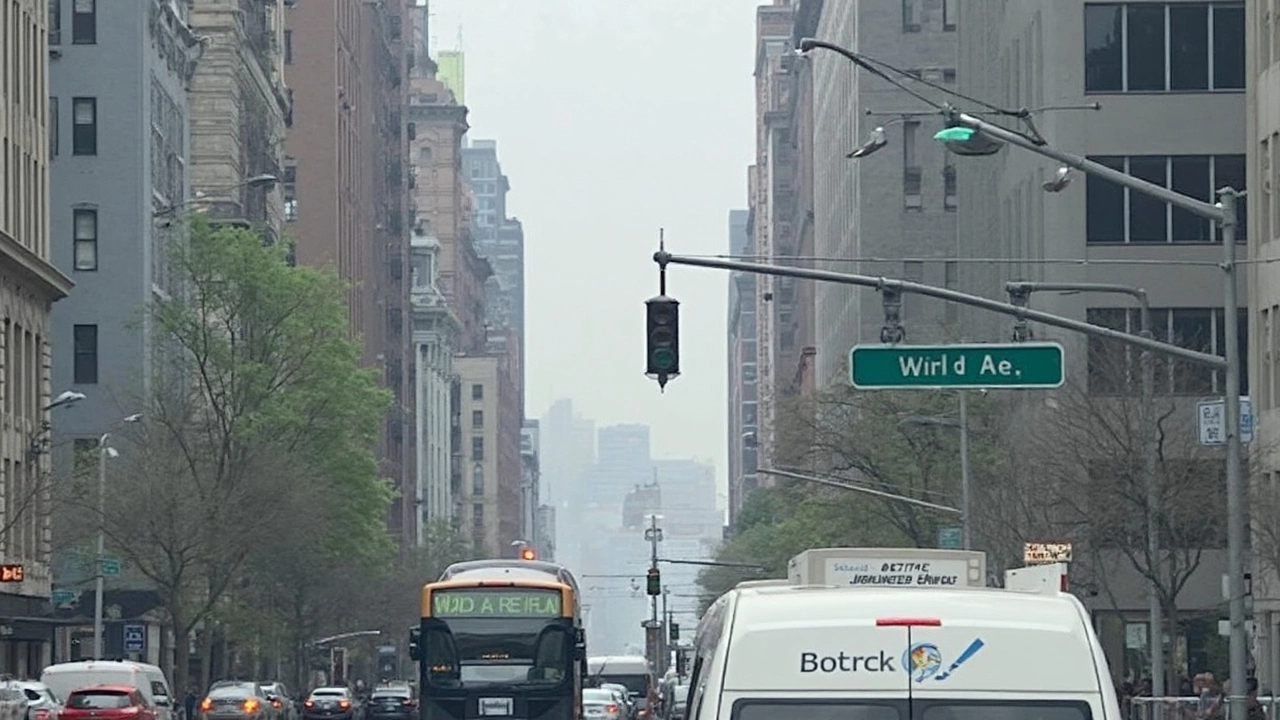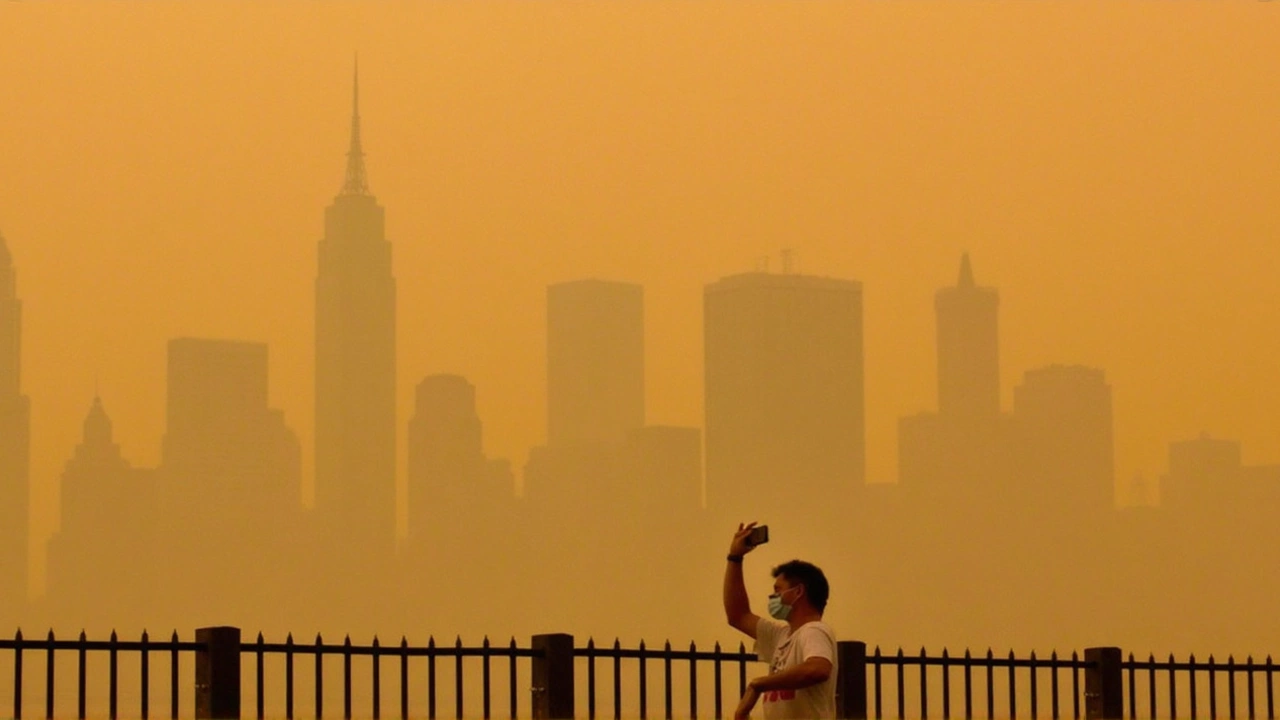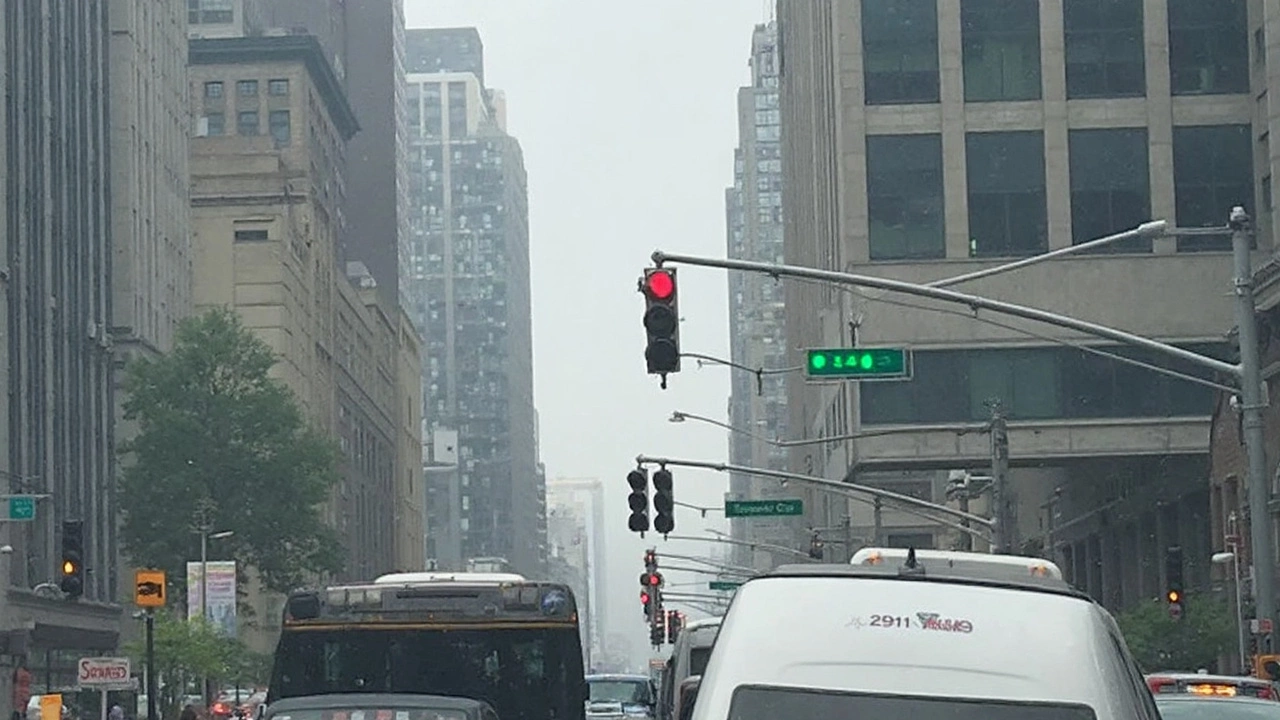Canadian Wildfires Push Smoke Over New York City
Those gray skies over the city? They're not just thunderstorms rolling in. In a worrying pattern that’s becoming all too familiar, thick wildfire smoke from Canada has once again drifted south, blanketing New York City and much of the East Coast in a haze. The New York State Department of Health didn’t waste time warning residents: for anyone dealing with asthma, heart disease, or any breathing issues, it’s better to ditch that evening walk.
This isn’t just an overcautious nudge. The Air Quality Index (AQI) in New York has spiked as high as 135, well above the safe zone. To put it in perspective, air is considered healthy when the AQI sits between 0 and 50; anything above 100 spells trouble for sensitive groups—even healthy folks might start to feel some effects if the numbers keep rising.

Fires Up North, Hazards Down South
This round of smoke isn’t a one-off—massive wildfires have been raging for months in Canada. Provinces like Saskatchewan and Manitoba have lost millions of acres to flames. Just in early June, Saskatchewan alone saw over 2.3 million acres go up in smoke, while Alberta lost 1.2 million acres. When that much land burns, it sends huge plumes of smoke straight up into the atmosphere. Those plumes, tracked even by satellites, are swirled around by wind patterns and arrive on the U.S. East Coast as dirty air.
It might look like ordinary smog, but wildfire smoke carries PM2.5, particles small enough to dig deep into lungs and even pass into our bloodstream. Doctors and public health pros are especially worried about the old, kids, pregnant women, and anyone with health conditions like asthma, COPD, or heart issues. Even for healthy people, too much exposure can bring on coughing, sore throats, headaches, or that telltale burning in your eyes.
- Main areas affected: New York City, Long Island, Hudson Valley, Adirondacks
- What to do: Limit time outside, especially during heavy smoke
- Watch for: Breathing trouble, chest pain, or unusual fatigue
Authorities haven’t relaxed since fires kicked up in May, when both Saskatchewan and Manitoba declared states of emergency. Tens of thousands had to get out quick as flames swept near towns and cities. That chaos up north might seem far away, but the impacts are being felt hundreds of miles south.
Tracking smoke isn’t easy. Forecast models can only do so much right now. Satellite images showed the smoke drifting through Appalachia weeks ago, but predicting where the next big wave will land is tricky—fires pop up, wind shifts, and data lags behind the reality on the ground. Scientists are racing to get better at this, but if it feels like the bad air just keeps coming, it’s because the fires aren’t letting up.
Why such brutal wildfires? More experts are pointing the finger at climate change: longer droughts, hotter temps, and unpredictable weather dry out forests, making them prime tinder. Until those factors change, smoke advisories may keep popping up in your weather app every few weeks.
If you have pre-existing health issues or just don’t want to risk it, the advice is boring but clear—stay inside when the air gets bad, keep an eye on alerts, and call a doctor if breathing feels harder than usual. As long as those wildfires burn, the East Coast isn’t in the clear.

